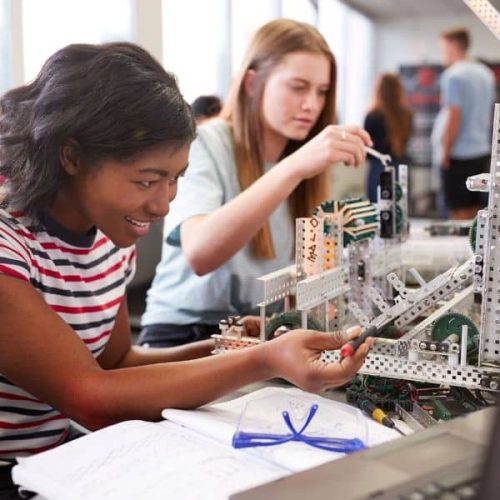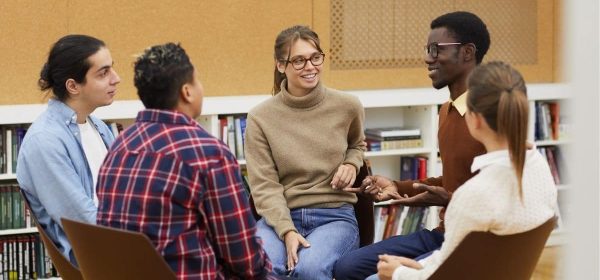
Teaching in The Classroom
In this section, we explore synchronous teaching practices – what you can do in the moment, whether in person or online, to create engaging learning experiences. We provide guidance on foundational techniques such as lecturing and discussion and how to do them well. We also look at ways to boost engagement and critical thinking. Finally, we describe some relatively new approaches that you might consider to bring a new dimension to your teaching.
Teaching by Discussion
Our ideas become most fully developed when we articulate them to each other, and when we allow the ideas of others to refine and revise our thinking. Holding discussions in the classroom is therefore one of the best strategies for creating lasting learning. But most teachers have experienced those awkward moments when we pose a discussion question, and nobody responds. How can we ensure that our courses achieve the admirable goals of teaching-by-discussion for every student in the room?
Get started
Effective Lecturing
The evidence for active learning is overwhelming, but lecturing can have a role in our overall package of teaching strategies. An effective lecturer can provide first exposure to new topics, simplify complex material, and inspire new learning. But even when we lecture, we have opportunities to create engagement with our learners with small moments of interaction or reflection.
Get started
Encouraging Critical Thinking
No phrase captures the goals of education like critical thinking. To create learners who can look beyond their biases and first impressions, we need to develop their skills of analysis, reflection, and judgment. Such an ambitious educational goal requires some critical thinking on the part of instructors, who can be supported by frameworks that define critical thinking and provide strategies to cultivate it in discussions and assignments.
Get started
Increasing Classroom Engagement
Engagement in the classroom takes multiple forms and can be inspired by numerous teaching methods. We tend to picture student engagement as an instructor leading students in a discussion or working with small groups, and those activities are indeed excellent approaches. But both research and experience can point us to an array of places and moments where we can increase student engagement, enticing students to become more active and commit to the learning experiences we create for them.
Get started
Creative Pedagogical Approaches
Instructors who seek to develop their teaching practices should begin with approaches that are supported by research on learning. But the unique contextual factors that will characterise every group of learners leave us room to experiment; after all, a technique from a published experiment might not produce the same results with your students. Finding new ways to apply evidence-based approaches to teaching, or even just exercising our pedagogical creativity, can lead to new discoveries in the field of education. Creative classrooms can also provide boosts of energy and motivation for both students and instructors.
















